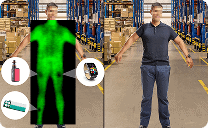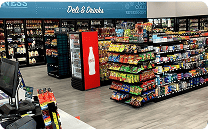System integration refers to designing and implementing connections between disparate technologies so they function cohesively. Rather than operating in silos, integrated systems share data, processes, and interfaces to streamline workflows, reduce redundancy, and support better-informed decision-making.
System integration may include physical integration (hardware connections), software-level integration (APIs or middleware), and user interface integration (bringing multiple systems into a single dashboard).
System integration is central to building an efficient, responsive surveillance, operations, and retail technology ecosystem. It allows surveillance footage to be tied to transaction logs, access events to be linked with personnel data, and alerts to be automatically routed to the appropriate channels. Combining these data sources into a centralized view allows businesses to act faster and with greater context.
Types of System Integration
Depending on the complexity and goals of the business, system integration can take several forms:
Point-to-Point Integration: Direct connections between two systems for specific data sharing, such as linking a POS terminal to a DVR for video verification of transactions.
Vertical Integration: Systems grouped by function and layered hierarchically, often in industries with strict process flows like logistics or healthcare.
Horizontal Integration: Multiple systems brought together under a single platform or interface, enabling broad data visibility and centralized control.
Common Data Format Integration: Systems use a shared format or schema to interpret and exchange data without custom adapters for each connection.
Middleware-Based Integration: Specialized software acts as a bridge, enabling communication and coordination between multiple independent platforms.
Each approach depends on the scale of the business, existing infrastructure, and the need for real-time communication between systems.
Use Cases in Surveillance and Operations
System integration is especially impactful in environments with multiple overlapping technologies. Examples include:
- Linking security cameras with POS systems to match transactions with video clips.
- Integrating access control with time tracking software to verify shift adherence.
- Connecting alarm systems with surveillance for immediate video verification.
- Centralizing analytics dashboards across multiple stores or facilities.
- Combining audit tools with video and behavioral analytics to manage incidents and staff performance.
These integrations eliminate manual checks and provide a clearer picture of what’s happening across departments and locations.
Benefits of System Integration
System integration offers several operational and strategic advantages:
- Streamlined workflows that reduce manual input and repetitive tasks.
- Real-time alerts and automation based on multi-source triggers.
- Centralized reporting for faster investigations and decision-making.
- Better use of existing technology investments through interoperability.
- Enhanced visibility into operations, security, and customer experience.
By connecting previously isolated tools, businesses can uncover insights and efficiencies that would otherwise remain hidden.
Considerations for Integration Projects
Successful system integration requires thoughtful planning and collaboration between third-party vendors, IT teams, and stakeholders. Key considerations include:
- Compatibility of systems and data formats.
- Security and access control for sensitive data.
- Scalability of the integration as operations expand.
- Vendor support and documentation.
- Ongoing maintenance and troubleshooting.
Choosing solutions with open architecture or API support often simplifies integration and future growth.
Connect It All with DTiQ
The 360iQ platform unifies your technology stack by integrating surveillance, POS, access control, analytics, management, and reporting into a single, easy-to-use platform. With DTiQ, your systems are all integrated, which means greater insights, better coordination, and a more complete view of your operations across every location. Schedule a demo today.

























